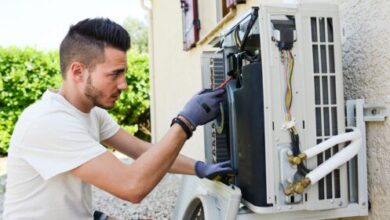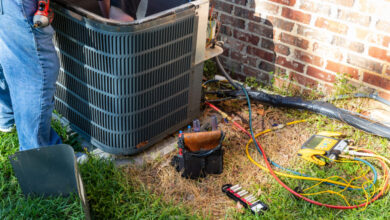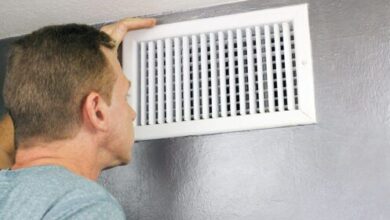What Emergency Heat on Your Thermostat Means


Modern heat pumps can provide efficient heating and cooling for your home, but they also include safety features and backup options that can sometimes be confusing. One of the most common and perplexing messages you might see on your thermostat is Emergency Heat. When this alert appears, it can be concerning for you, especially on a cold day.
What Emergency Heat Means
Emergency Heat is a backup heating mode built into most heat pump systems. Heat pumps work by pulling heat from the outdoor air and transferring it inside. This process is highly energy-efficient, but it has limits. When the outdoor temperature drops too low or your heat pump has a malfunction, your system can struggle to maintain your desired indoor temperature.
When this happens, your thermostat may automatically switch to Emergency Heat. Unlike standard heat pump operation, Emergency Heat relies on auxiliary heating elements to generate warmth. It often uses electric resistance coils. While effective, this method consumes significantly more energy than normal heat pump operation. The thermostat displays an alert to notify you that the system is in this energy-intensive backup mode, and it may also indicate that your system requires attention.
Why Your Thermostat May Activate Emergency Heat
Several factors can turn on the Emergency Heat mode on your thermostat. One common reason is extreme cold. Heat pumps become less efficient as the outside temperature drops. At a certain point, your unit will not be able to extract enough heat from the air to maintain comfortable temperatures in your home. Emergency Heat provides a supplemental heat source so your home remains warm.
Another reason for your system to switch to this mode may be a problem with the heat pump itself. Issues, like low refrigerant levels, a malfunctioning compressor, or faulty sensors, will prevent the heat pump from operating effectively. When the system finds that normal heating is not enough, it will automatically switch to the backup mode to maintain warmth in your home.
Additionally, you could accidentally engage Emergency Heat manually. Many thermostats include a switch or button labeled Emergency Heat intended for temporary use when a heat pump is not functioning correctly. Activating this mode without needing it can lead to higher energy bills, so it’s important to know when it is appropriate to use.
Signs Your Heat Pump Needs Attention
If Emergency Heat engages often, even when temperatures are not unusually cold, it may indicate a larger issue. Look for signs, such as uneven heating in your home, unusual noises from the heat pump, or higher-than-normal energy bills. Reduced airflow from vents and ice buildup on outdoor units are additional red flags.
Monitoring your system’s behavior over time also helps you distinguish between occasional activation due to weather conditions and repeated activation caused by mechanical or electrical problems. By keeping an eye on your system, you can determine whether you need a professional inspection or if normal operation resumes when conditions improve.
Immediate Steps to Take
When your thermostat shows Emergency Heat, your first instinct may be to panic, but there are simple steps you can take right away to understand what’s happening. Start by checking the outdoor temperature. If the weather is unusually cold, your system may automatically engage Emergency Heat as designed, so you don’t need to worry immediately. However, if temperatures are mild, the switch to Emergency Heat often indicates a problem with your heat pump.
Next, inspect your thermostat settings. Make sure it hasn’t been accidentally switched into Emergency Heat mode by someone in your household. Return it to ‘Heat’ or ‘Auto’ if possible and see if the system resumes normal operation. If Emergency Heat engages on its own, make sure that your heat pump’s outdoor unit is not obstructed. Ice, debris, or snow can reduce efficiency and may trigger the backup mode. Gently clearing the area around your unit may restore normal operation.
It’s also important to check your air filter. A clogged filter can restrict airflow in your living space and force your heat pump to work harder. This will cause the backup heat to kick in. Replacing the filter often restores efficiency. Additionally, check your circuit breakers. A tripped breaker or power issue can interfere with heat pump operation, causing the system to rely on the backup heater. Resetting a tripped breaker or restoring power may resolve the issue.
Listen for unusual sounds coming from your system. If it is making loud grinding, rattling, or squealing noises, shut it down and call us immediately. These noises often signal mechanical issues that could worsen with continued operation. Taking these simple troubleshooting steps will not solve the problem, but they can provide your HVAC technician with valuable information to speed up repairs.
Long-Term Maintenance to Prevent Emergency Heat Activation
The best way to make sure that Emergency Heat mode is not used often is to schedule regular maintenance sessions. During this time, we will inspect coils and check refrigerant levels to help your heat pump be more efficient. Outdoor units should be clear of leaves and debris, as obstructions can reduce heat transfer and trigger backup heating.
Scheduling professional inspections at least once a year helps to keep your heat pump in peak condition. Our technicians can find issues with your system before they escalate, perform necessary adjustments, and verify that your thermostat and backup heating elements are functioning properly. Staying proactive with maintenance can prevent sudden reliance on Emergency Heat, saving you energy and money.
Understanding the Costs of Emergency Heat
One of the main reasons you want to resolve Emergency Heat alerts quickly is cost. Since auxiliary heating relies on electric resistance or other high-energy methods, running Emergency Heat for extended periods can significantly increase your utility bills. Understanding this, you should use Emergency Heat only when necessary and switch back to standard heat pump mode as soon as conditions allow.
If you are aware of how your energy usage changes when Emergency Heat mode is active, it can help you monitor your bills and detect spikes. If you notice excessive energy use, it may indicate a deeper problem with your system.
Safety Considerations
Emergency Heat generally does not pose a safety risk when your system is operating correctly. However, if you suspect a malfunction, do not attempt extensive repairs yourself. Electric backup heating elements carry high voltage, and heat pumps have moving parts that can cause injury if handled improperly.
Keep your thermostat settings clear and avoid toggling modes unnecessarily. Educate all household members about what Emergency Heat means so that no one inadvertently activates it when it is not needed. Safety comes first, and understanding your system’s alerts helps you respond appropriately.
Contact Us for Reliable Heating This Winter
Emergency Heat is an important feature that will protect your home from cold weather, but it should not become the main way that you heat your home. Understand what triggers it and take immediate steps when it appears to make sure that your heat pump operates efficiently and safely. At Rosenberg Plumbing & Air, we have over 37 years of experience serving the San Antonio area. Contact us to schedule a consultation today.
Tags: smart thermostats, Thermostats




